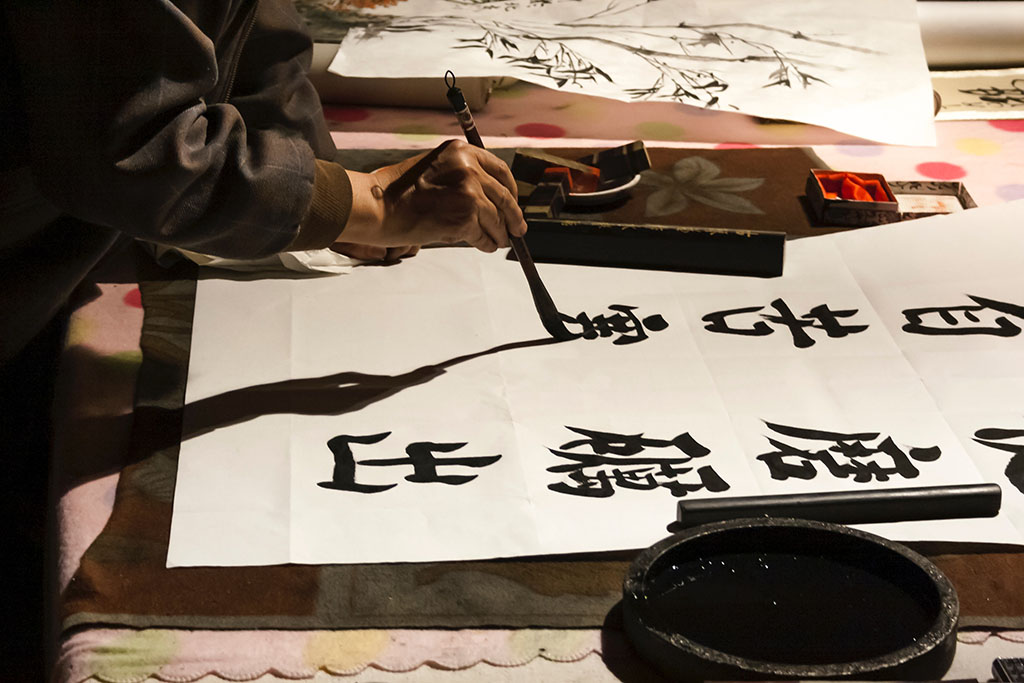Understanding the Chinese Writing System: A Simple Guide
One of the world's oldest and most complex writing systems, Chinese characters or Hanzi, paint a picture of rich cultural and historical significance. Today we're taking a deep dive into this fascinating language. You don't need to be a language buff or a scholar, just come along with curiosity and an open mind.

The Basics
The Chinese writing system is unique compared to most Western alphabets, in that it is a logographic system. While alphabets represent sounds and syllables, logographs represent words or meaningful components of words. What this means is that each Chinese character represents a whole syllable, carrying meaning and sound simultaneously.
Chinese characters are often composed of smaller components or radicals, which can provide clues to a character's meaning or pronunciation. For example, the character 妈 (mā), meaning "mother," consists of two parts: 女 (nǚ), the radical for "female", and 马 (mǎ), a character meaning "horse", providing the pronunciation.
The Birth of Hanzi
The earliest known Chinese characters date back over 3,000 years to the Shang dynasty, where inscriptions were made on oracle bones for divination purposes. These symbols, known as "oracle bone script", evolved over time into the modern characters we see today.
From oracle bone script, the written language evolved into "Seal Script" during the Zhou Dynasty. This form of writing, with its elaborate and artistic curves, was mainly used for ceremonial inscriptions. Over centuries, this transformed into "Clerical Script", which was more practical for daily use. Eventually, "Regular Script" emerged in the Han Dynasty and has been the standard form ever since.
Simplified vs Traditional Chinese
In the 1950s and 60s, in an effort to increase literacy, the Chinese government simplified many traditional Chinese characters, leading to the two main systems in use today: Simplified Chinese (used mainly in Mainland China and Singapore) and Traditional Chinese (used in Taiwan, Hong Kong, and among overseas Chinese communities).
The differences between the two are akin to the differences between cursive and print in English. Simplified Chinese characters often have fewer strokes and simpler forms, whereas Traditional Chinese maintains the original complex structures.
How Many Characters Do You Need to Know?
There are tens of thousands of Chinese characters, but don't be daunted! An educated Chinese person typically knows around 8,000 characters, but you only need to know 2,000-3,000 to read a newspaper.
The Art of Chinese Calligraphy
Chinese calligraphy, the art of writing Chinese characters, is a traditional aesthetic discipline and has been closely tied to Chinese culture and society for thousands of years. It is much more than mere writing, carrying with it a sense of beauty, rhythm, and spiritual depth. The unique tools used in Chinese calligraphy - the brush, ink, paper, and inkstone - are collectively known as the "Four Treasures of the Study".
In conclusion, the Chinese writing system is a blend of tradition and modernity, an art and a science, that paints a vivid picture of the culture's past, present, and future. So, the next time you see a Chinese character, see if you can spot the elements of this rich heritage within its strokes.
Remember, every learning journey starts with a single step, or in this case, a single stroke. So why not give learning Chinese a try? Who knows where this journey might take you!
Leave a Reply